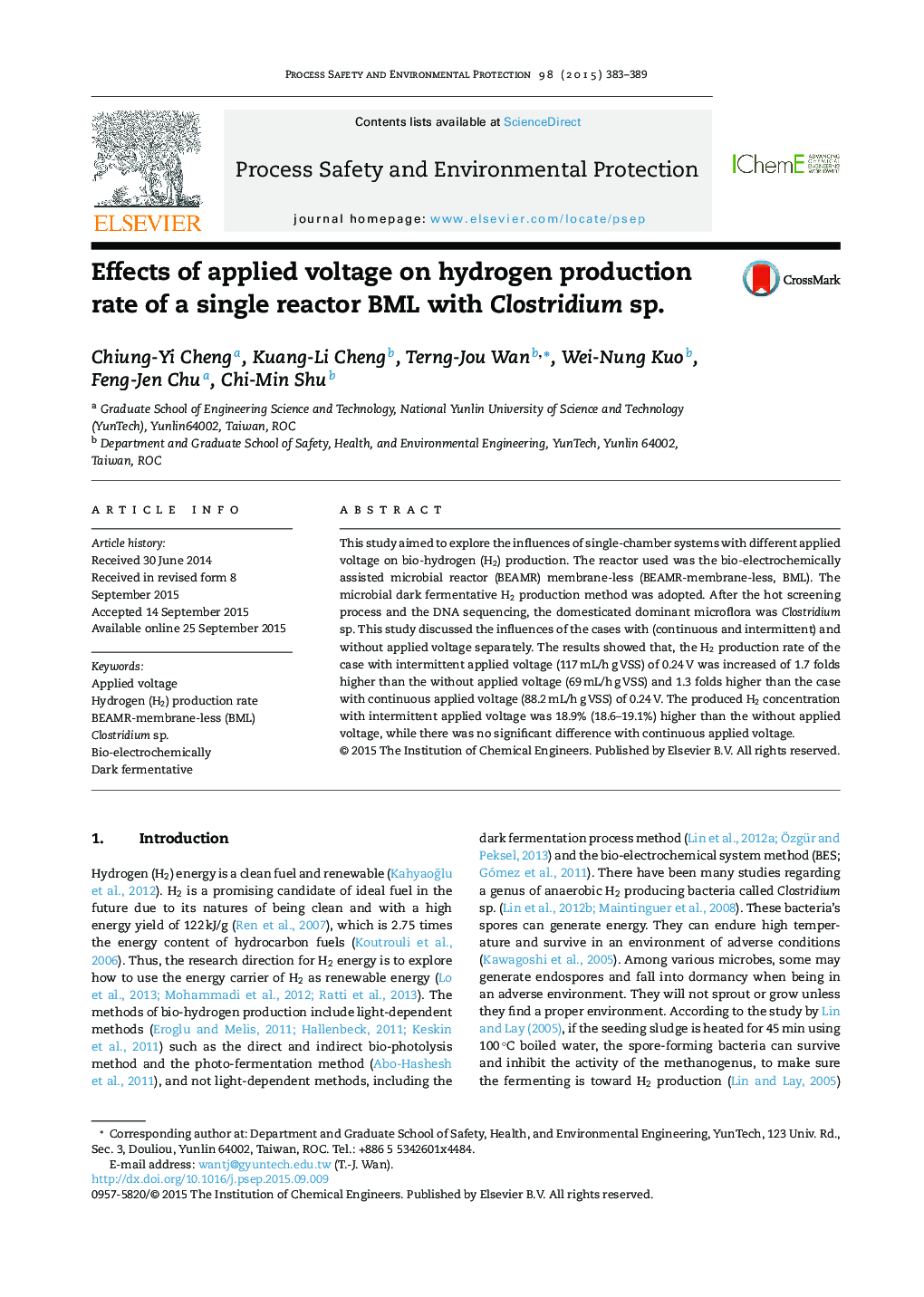| Article ID | Journal | Published Year | Pages | File Type |
|---|---|---|---|---|
| 6974441 | Process Safety and Environmental Protection | 2015 | 7 Pages |
Abstract
This study aimed to explore the influences of single-chamber systems with different applied voltage on bio-hydrogen (H2) production. The reactor used was the bio-electrochemically assisted microbial reactor (BEAMR) membrane-less (BEAMR-membrane-less, BML). The microbial dark fermentative H2 production method was adopted. After the hot screening process and the DNA sequencing, the domesticated dominant microflora was Clostridium sp. This study discussed the influences of the cases with (continuous and intermittent) and without applied voltage separately. The results showed that, the H2 production rate of the case with intermittent applied voltage (117 mL/h g VSS) of 0.24 V was increased of 1.7 folds higher than the without applied voltage (69 mL/h g VSS) and 1.3 folds higher than the case with continuous applied voltage (88.2 mL/h g VSS) of 0.24 V. The produced H2 concentration with intermittent applied voltage was 18.9% (18.6-19.1%) higher than the without applied voltage, while there was no significant difference with continuous applied voltage.
Keywords
Related Topics
Physical Sciences and Engineering
Chemical Engineering
Chemical Health and Safety
Authors
Chiung-Yi Cheng, Kuang-Li Cheng, Terng-Jou Wan, Wei-Nung Kuo, Feng-Jen Chu, Chi-Min Shu,
